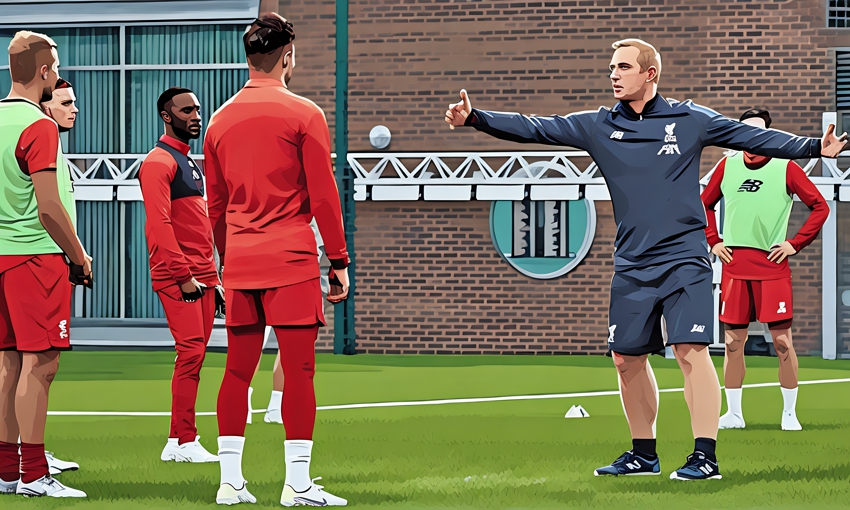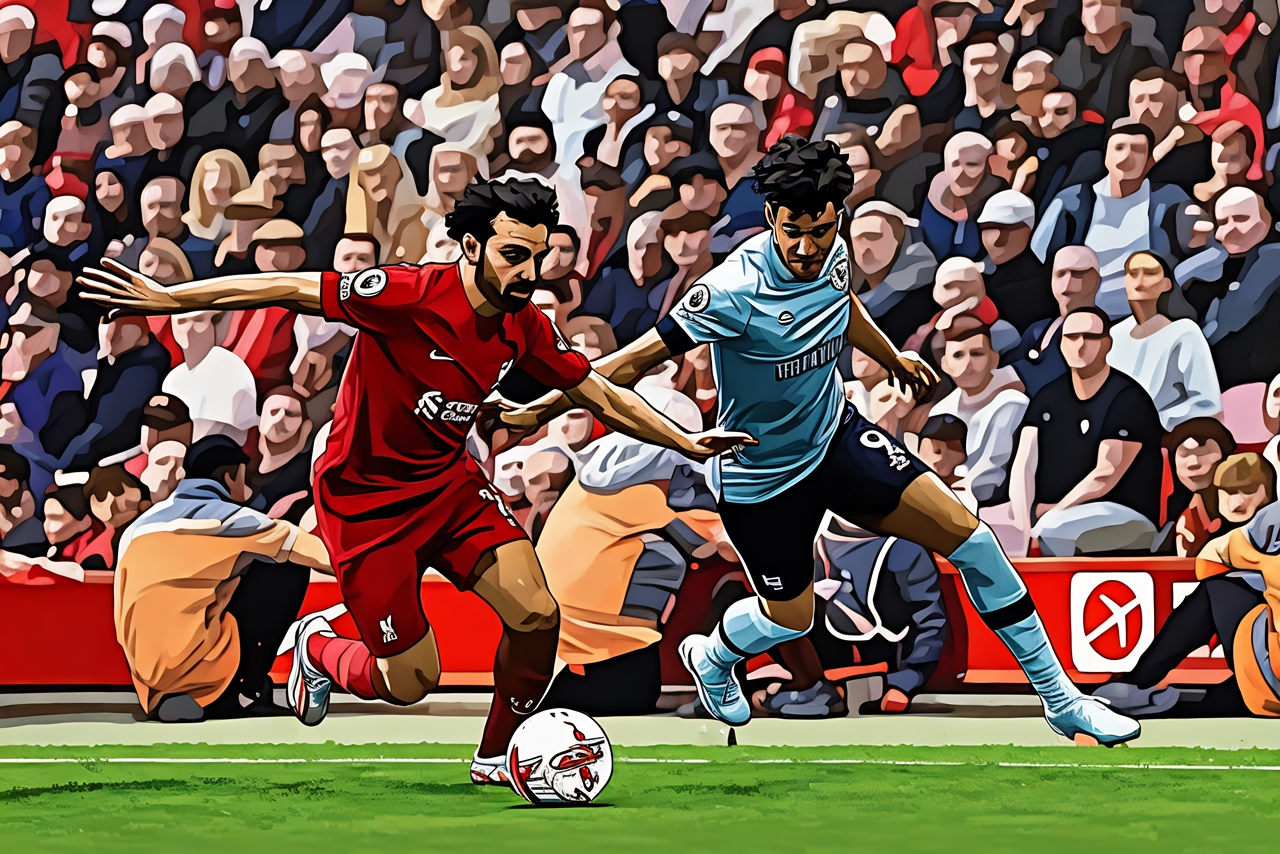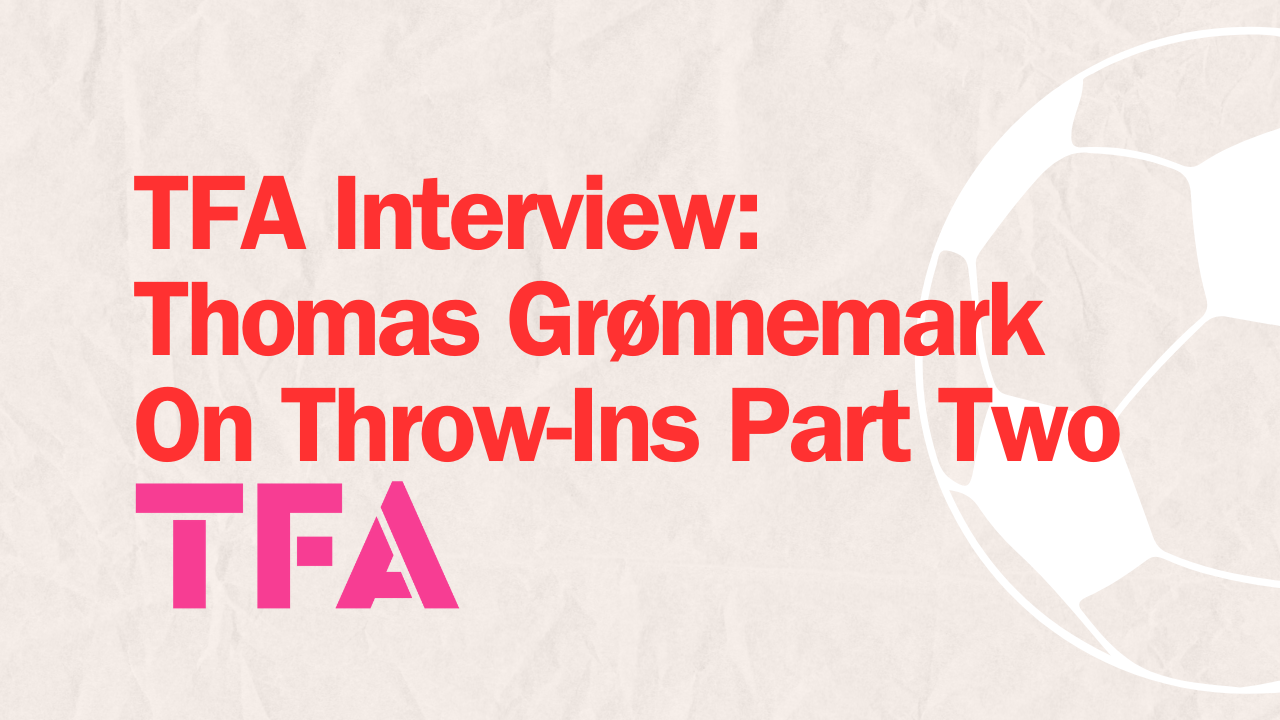Welcome to part three of Total Football Analysis‘ throw-in series and the second part of the interview with the renowned throw-in coach, Thomas Grønnemark.
In the previous throw-in tactics and analysis, we discussed throw-in techniques and their impact on tactics, examining Grønnemark’s theory of long, fast, and clever throw-ins. We then discussed the differences between set-piece routines and his strategy for throw-ins, with Grønnemark detailing his “throw-in time-complexity model.”In this tactical analysis, we will discuss the throw-in coaching specialist’s defensive strategies, defensive handling against various attacking throw-in tactics, the coaching aspect, and how he deals with the head coach’s demands.
Finally, we will discuss Grønnemark’s tenure at Liverpool with Jürgen Klopp, the extent of development seen in some players, and the different roles of standout players like Mohamed Salah.Defensive Types And Systems
TFA:
Before getting into the main systems, let’s talk about fluidity.
Defensively, in other set-pieces, teams usually have time to implement a defensive system, which is completely different from open play.
This is not guaranteed in throw-ins, as the opponent can play quickly before we can reorganise ourselves.
Therefore, we don’t always have enough time, which requires a lot of fluidity between the defensive strategy used in open play and the defensive plan against throw-ins.
How do you achieve that?
Grønnemark:
To achieve that, you should have two important factors:
1- Make your players have defensive throw-in intelligence, so they can know when to press and when not, which is called “pressure risk”
2- They also have to know different types of defending and do them perfectly.
For example, sometimes you need to do a “sandwich”, like having two-against-one situations or three-against-two situations.
You may need to mark the thrower sometimes, while you should mark the mini switch in other cases (to prevent the opponent from switching the play).
There are nearly seven of these types of defending and you have to be able to do them well to teach your players.
After analysing the opponent, you have to be really good at the type of defending you choose, but you also have to be able to switch this type during the game because the opponent may suddenly be good at something while your defining type doesn’t work, so you should change it.
For example, if you decide to mark the thrower to make it harder for the opponent to do a return pass (wall pass) with a good distance, but you miss this player elsewhere.
So we can say that if you can teach your players to be intelligent in pressure risk and to be able to carry out different types of defending, you will defend with good fluidity.
TFA:
What is your preferred main system, zonal or man-marking?
Grønnemark:
There is no best way to play football.
Zonal marking gives you the ability to cover quite a big area to confine the opponent and decently press your opponent; the challenge is that you can’t apply the same intense pressure as man-marking.
I see some teams defend with a zonal marking system, and it’s quite easy to play against them if you have a good, precise thrower, passes, and throw-in.
The man-marking system enables you to apply more tight pressure, but its weakness is that it is easy to drag the markers anywhere to create space.
As I have mentioned before, there is no better type, but do every type well with good pressure and pressure risk.
Coaching Tactics

TFA:
What do you do if, for example, the coach prefers man-to-man pressure in the midfield on the opponent’s midfield trio in a mid-block, while you prefer a more zonal type of defence in this case?
Grønnemark:
I don’t prefer any kind of thinking that it is the best defending way, as I told you.
Of course, I talk with the head coach, and if he prefers something, I will try to educate him so that I can implement it efficiently.
In general, my preferences are quite related to the opponent.
If I play against a team that isn’t good at attacking, I will try to put more players down the line to implement “a sandwich” and extra pressure, but it is harder to do that if they have a complex strategy.
I don’t come to a club to push anything through.
TFA:
Do you have non-negotiable aspects in defending?
Grønnemark:
Of course, there are some things that don’t work, so I have to change.
For example, if players don’t react fast defensively and if not all the players are too insistent on performing their assigned roles with fast defensive reactions, this is a non-negotiable aspect.
TFA:
How much time did you have in training throw-ins at Liverpool? What is the rate of improvement?
Grønnemark:
I analysed all the Liverpool games in five seasons, which are around 300 games with 15000 throw-ins.
I analysed all of them many times, writing a deep report for every throw-in.
I coached about three, four, or five times per season, and it was normally three days, 30:40 minutes of training.
Sometimes, I have all the players, while other times, I have three groups of eight players for 15 minutes each.
I can’t reveal the stats for improvement because of the club contract, but most of my players improve their throw-in distances by five to ten metres in general.
Most of them score eight to 12 goals from long throw-ins if that is their preferred style.
From fast and clever throw-ins, Liverpool scored 10 to 15 goals per season directly after throw-ins; three to four of them were from opponents’ throw-ins.
It is not only about creating chances to score a goal; teams have many purposes, like creating spaces and having precision, so you can then either control the game or create chances.
Hence, there are many different approaches depending on your purpose when you have a throw-in.
TFA Note: The season before Gronnemark’s arrival in 2018, Liverpool retained possession from throw-ins under pressure just 45.4% of the time, with only Swansea (43.8%) and Huddersfield (42.1%) being worse in the English top-flight.
They also allowed opposing sides to win the ball at an above-average rate of 51.8%.
This has improved by 23% under Gronnemark’s tutelage, with the Reds going from the Premier League‘s third-worst to the best.
TFA:
Do the roles of players having superb abilities differ from the others? how did you use Mohamed Salah? Who was your favourite player at Liverpool regarding throw-ins, and why?
Grønnemark:
Of course, some players have amazing individual superpowers, like being fast, strong or having an amazing first touch.
For example, if you want a throw-in towards the feet, you want a strong player, so I should first assess my players’ abilities and decide what type of tools would be best.
Salah, for example, isn’t tall but is very strong physically, good at creating spaces and also protecting it to reach the ball first at the optimal moment.
He is also good at scanning, which is a very important skill in throw-ins because you may carry out an idea to create space, but the player doesn’t scan.
We trained to do these basics, like scanning.
Sometimes, I see set-piece coaches make this mistake by prioritizing the complex aspects while neglecting the basics.
Here, I remember Arsène Wenger’s words: “The problem in football is that you learn how to play (the wrong) way round- first execution, then decision-making and perception last.”

TFA:
You have said that you train the players how to behave in the three zones, three-thirds.
Do the ideas or the “tools” differ according to the purpose of the coach in each zone? And how do you deal with that?
Grønnemark:
Yes, of course.
For example, in the middle zone, I have around 20 tools which can be used in many different ways because each one can have different players, distances, timings and then sequences or unlimited space creation, as I mentioned in the first part.
Of course, I use them depending on the coach’s purpose, so I communicate with the coaches to learn their preferences. I also work freely with my knowledge sometimes, as in Liverpool.
In other clubs, it could be a bit limited, and I accept that listening to the coach.
For example, I coached a team playing in a 4-4-2 diamond shape.
I was told that the ‘6’ shouldn’t move out of his position even when we have an attacking throw-in because he wants to feel more secure.
Although he was supposed to be involved in my space creation, and this action might close down a lot of space creation, I accepted that.
I am not pushing anything through; I just try to recommend the optimum option that fits my team.
If I have to change my strategy, I am okay with that and can do that easily.
Sometimes, the coach tells me that he wants to give me more time and focus on counter-attack throw-ins, and because of my 20-year experience, I do that easily and smoothly.
In this case, I can’t tell the players about what I told you at the beginning because they will be confused, so I use my knowledge to see how my teams can improve.
Then, I take steps and drills specific to this team so as not to confuse them, especially since I am a freelancer.
TFA: Thanks for your time and the valuable details!Grønnemark:
You are welcome. I am always available on social media, where I try to increase knowledge about throw-ins, and also on my website (Throw In Academy) for anyone who needs consultation.Conclusion
In this analysis, we have discussed his opinions on the best defensive types and strategies, his handling of various attacking scenarios, the coaching aspect, and how he deals with the head coach’s demands.
Finally, we have discussed his tenure at Liverpool, the extent of development seen in some players and the different roles of standout players like Mohamed Salah.After three parts of our throw-in series, I think we now know all the neglected variables around this unique kind of set-pieces, so we are ready to get into detailed tactical analysis with footage in the upcoming parts.






Comments